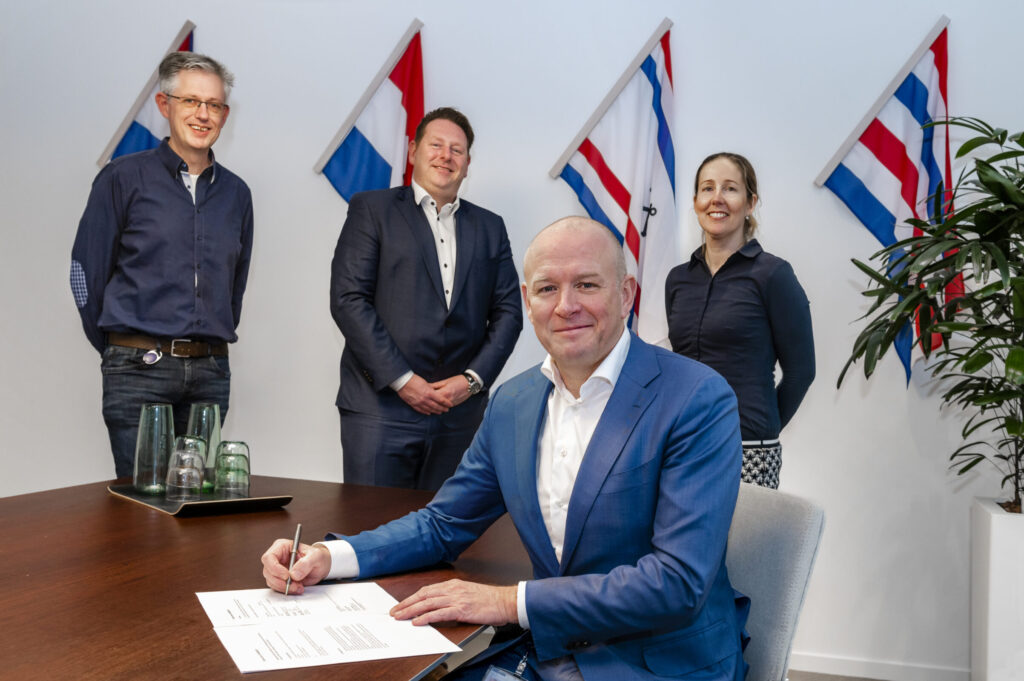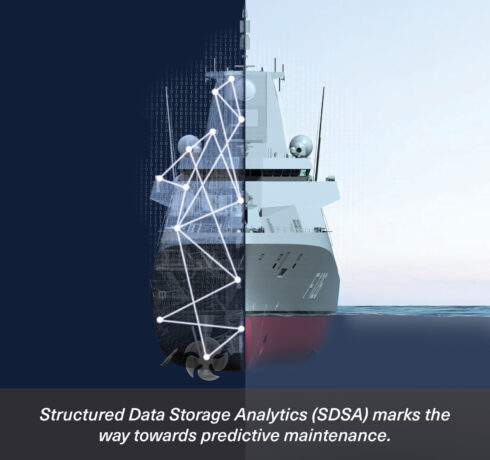Damen Naval has signed a contract with the Netherlands Defence Materiel Organisation for the three-year development of a Structured Data Storage Analytics (SDSA) programme. The agreement represents the continuation of Damen’s focus on digitalisation, says the company’s Product Manager ILS & Support Services Niek Marsé. “Digitalisation is the way forward. This programme marks another step towards the increased digitalisation of our ships.”
The essence of SDSA, says Niek, is “data-driven decision support for maintenance”. The starting point is the data gathered by the large number of sensors installed throughout modern naval vessels. “These sensors collect data from all sorts of ship systems and equipment: temperatures, pressures, signatures and vibrations, for example.” The SDSA programme will manage this vast amount of data. “We will be developing various aspects such as the interfacing, algorithm development, data visualisation through the development of user dashboards and testing and verification to establish technology readiness.”
For the ‘storage’ aspect of the programme, Damen Naval will be collaborating with RH Marine. “In addition to sensors, other data sources include RH Marine’s Integrated Platform Management System and Integrated Bridge Management System. Together with RH Marine, we will be developing ways to structure the data in a data logger,” adds Niek.
 Managing Director Roland Briene signs the agreement with the DMO. In the back from left: Smart Maintenance Coordinator Marcel van der Heijde, Product Manager ILS & Support Services Niek Marsé and Legal Counsel Vera Leijten.
Managing Director Roland Briene signs the agreement with the DMO. In the back from left: Smart Maintenance Coordinator Marcel van der Heijde, Product Manager ILS & Support Services Niek Marsé and Legal Counsel Vera Leijten.
The ‘analytics’ part of the programme will be carried out in cooperation with software company Ilias Solutions. “The generation of these algorithms will be in close collaboration with the special department of the CZSK [Dutch Naval Command] ‘Data voor Onderhoud’ [Data for Maintenance] and the DMI [Directie Materiële Instandhouding, Dutch Naval Maintenance and Sustainment Agency in English]. An example of this are the vibration sensors on a propeller shaft; if these are outside permitted limits, a dedicated algorithm would be able to recognise this. “These algorithms will include machine learning, marking the way towards predictive maintenance from the current situation of preventative maintenance.”
The SDSA programme will also, of course, involve collaboration with the Dutch Navy. “They have their IMMS – the Integrated Mission Management System – which is a system architecture supplied by RH Marine that is used on the newer platforms such as the CSS and ASWF but is also part of the upgrades of the LCF (Air Command Frigate) and the Johan de Witt. SDSA will run on that IMMS network.”
“Digitalisation is the way forward. This programme marks another step towards the increased digitalisation of our ships.” Niek Marsé
This new contract, signed on 24 January 2023, is part of Damen Naval’s ongoing process of increased digitalisation and ‘big data’ management; it follows on from a strategic framework agreement signed by Damen Naval, the DMI and RH Marine back in 2020. In terms of vessels, the principles of SDSA have already been used onboard the Combat Support Ship (currently under construction in Romania) and will be implemented on the ASW frigates in the future. “We have an evolving approach to this, using it on every project, and therefore also with the accompanying feedback loop,” notes Niek.
That evolutionary approach is witness to an ever increasing number of sensors and, therefore, data. Future vessels will not only require structured data management, but possibly also selective data analysis. With that in mind, does Niek think that all the data is 100 per cent necessary to achieve the ‘end goal’ of more efficient maintenance of naval vessels? “The answer, of course, is no,” he replies, “that’s why we have to act small to think big and learn by doing.”

